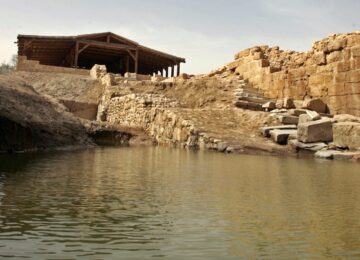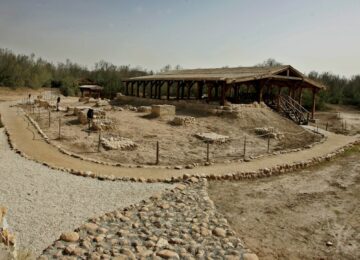
The baptismal site Jordan river: is an archaeological World Heritage site in Jordan on the east bank of the Jordan River, officially known as the baptismal site Jordan River “Bethany Beyond the Jordan” (Al-Maghtas).
It is considered to be the original location of the Baptism of Jesus and the ministry of John the baptismal site Jordan River and has been venerated as such since at least the Byzantine period.
Following a suggestion by Origen, the baptismal site Jordan river of Jesus is sometimes also called.
The baptismal site Jordan River has been authenticated by all major Christian Church leaders as one of the three holiest sites of Christianity, along with Bethlehem and Jerusalem. It is the place where Jesus was baptized by John.
John the Baptist lived here for about 20 years. He resided in a cave on Elijah’s Hill.
The site and the surrounding area have been a place where many Prophets have passed through.
The baptismal site Jordan River was a Pilgrimage Station on the early Pilgrimage Trail.
It is a historical site; persevered just as it was over 2,000 years go.
It is a nature reserve with many flora and fauna.
Al-Maghtas includes two principal archaeological areas.
The remnants of a monastery on a mound known as Jabal Mar-Elias (Elijah’s Hill) and an area close to the river with remains of churches, baptism ponds and pilgrim and hermit dwellings. The two areas are connected by a stream called Wadi Kharar.
The strategic location between Jerusalem and the King’s Highway is already evident from the Book of Joshua report about the Israelites crossing the Jordan there. Jabal Mar-Elias is traditionally identified as the site of the ascension of the prophet Elijah to heaven.
The complete area was abandoned after the 1967 Six-Day War when both banks of the Jordan became part of the frontline. The area was heavily mined then.
After the signing of the Israel–Jordan peace treaty in 1994, the de-mining of the area soon took place after an initiative of Jordanian royalty, namely Prince Ghazi.
The site has then seen several archaeological digs, four papal visits and state visits, and attracts tourists and pilgrimage activity.
In 2015, the site was designated as a World Heritage site by UNESCO, excluding the western side of the river.
Approximately 81,000 people visited the site in 2016, mostly European, American, and Arab tourists.
Thousands flock to the site on January 6 to mark Epiphany.
Al-Maghtas is located on the eastern bank of the baptismal site Jordan river, 9 kilometres (5.6 mi) north of the Dead Sea and 10 kilometres (6.2 mi) southeast of Jericho. The entire site, which is spread over an area of 533.7 hectares (5.337 km2; 1,319 acres), has two distinct zones – Tell al-Kharar, also called Jabal Mar Elias (Elijah’s Hill), and the area close to the river (2 kilometres (1.2 mi) to the east), the Zor area, where the ancient Church of Saint John the Baptist is situated.
The site is close to the ancient road between Jerusalem and Transjordan, via Jericho, across a Jordan River ford and connecting to other biblical sites such as Madaba, Mount Nebo and the King’s Highway.
While the initial site of veneration was on the eastern side of the baptismal site Jordan river, the focus had shifted to the western side by the 6th century.
The term Al-Maghtas itself has been used historically for the area stretching over both banks of the river. The western part, also known under the name Qasr el-Yahud, has been mentioned in the UNESCO proposal, but so far has not been declared as a World Heritage Site.
The Hebrew Bible also described how Prophet Elijah, accompanied by Prophet Elisha, stopped the waters of the Jordan, crossing to the eastern side, and then went up by a whirlwind into the heavens. Elisha, now his heir, again separated the waters and crossed back (Kings II, 2:8–14). An ancient Jewish tradition identified the site of crossing with the same one used by Joshua, thus with Al-Maghtas, and the site of Elijah’s ascension with Tell el-Kharar, also known as Jabal Mar Elias, “Hill of Prophet Elijah”.
The archaeological excavations have unearthed antiquities that attest to the conclusion that this site was first settled by a small group of agriculturists during the Chalcolithic period, around 3,500 BC. There are again signs of settlement from the Hellenistic period.
The site contains buildings with both aspects of a Jewish mikveh (ritual bath) resembling Second Temple period pools from Qumran, and later of Christian use, with large pools for baptism, linking both customs.
Possibly in the 2nd-3rd and certainly starting with the 5th-6th centuries, Christian religious structures were built at Tell al-Kharar.
It must be remembered that in the 1st-4th centuries of the Christian Era, Christianity was often persecuted by the Roman state, and only after it became first tolerated and then outright the state religion of the Roman, or now so-called Byzantine Empire, open Christian worship became possible.
Archaeological excavations also established that the hill of Tell al-Kharrar, known as Elijah’s Hill, was venerated as the spot from which Prophet Elijah ascended to heaven. In the 5th century, in commemoration, a Byzantine monastery was erected here. The archaeologists have named it the “Monastery of Rhetorios” after a name from a Byzantine mosaic inscription.
The Byzantine emperor Anastasius I Dicorus erected between 491–518 a first church dedicated to John the Baptist on the eastern banks of the River Jordan. However, due to two floods and earthquake events the church was destroyed. The church was reconstructed three times, until it crumbled, together with the chapel built over piers, during a major flood event in the 6th or 7th century.
The pilgrimage sites have shifted during history. The main Christian archaeological finds from the Byzantine and possibly even Roman period indicated that the initial venerated pilgrimage site was on the east bank, but by the beginning of the 6th century, the focus had moved onto the more accessible west bank of the river.
During the Byzantine period, the site was a popular pilgrimage centre. The Sasanian conquest of Jerusalem in 614, river floodings, earthquakes and the Muslim Siege of Jerusalem (636–637) put an end to Byzantine building activity on the east bank of the Jordan, particularly in the Wadi al-Kharar area.
The Muslim conquest put an end to Byzantine building activity on the east bank of the Jordan River, but several of the Byzantine structures remained in use during the Early Islamic period. With time worship took place just across the river on the western side at Qasr el-Yahud. After 670 AD the commemoration of the baptism site moved to the western side.
The structures were rebuilt many times but were finally deserted by end of the 15th century.
In the 13th century an Orthodox monastery was built over remnants of an earlier Byzantine predecessor, but how long it lasted is not known. However, pilgrimage to the site declined and according to one pilgrim, the site was in ruins in 1484. From the 15th to the 19th century there were hardly any visits by pilgrims to the site. A small chapel dedicated to St. Mary of Egypt, a hermit from the Byzantine period, was built during the 19th century and was also destroyed in the 1927 earthquake.
In the early part of the twentieth century, a farming community had occupied the area east of the Jordan River.
As a result of the Six-Day War in 1967, the river became the ceasefire line and both banks became militarised and inaccessible to pilgrims.
After 1982, while Qasr el-Yahud was still off-limits, Israel enabled Christian baptisms at the Yardenit site further north.
Following the Israel–Jordan peace treaty in 1994 access to Al-Maghtas was restored after Prince Ghazi of the baptismal site Jordan river, who is deeply interested in religious history, visited the area in the company of a Franciscan archaeologist who had convinced him to take a look at what was thought to be the baptismal site Jordan river.
When they found evidence of Roman-period habitation, this was enough to encourage de-mining and further development.
Soon afterwards, there were several archaeological digs led by Dr Mohammad Waheeb who rediscovered the ancient site in 1997.
The 1990s marked the period of archaeological excavations of the site followed by primary conservation and restoration measures during the early 21st century.
Jordan fully reopened al-Maghtas in 2002.
This was then followed by the Israeli-run western side, known as Qasr el-Yahud, which was opened for daily visits in 2011 – the traditional Epiphany celebrations had already been allowed to take place since 1985, but only at the specific Catholic and Orthodox dates and under military supervision.
In 2007, a documentary film entitled The Baptism of Jesus Christ – Uncovering Bethany Beyond the Jordan was made about the site.
The western side attracts larger touristic interest than its Jordanian counterpart, half a million visitors compared to some ten thousand on the Jordanian side.
Other estimates put the numbers as 300,000 on the Israeli-occupied Palestinian side and 100,000 on the Jordanian side.
To put that into perspective, Yardenit has more than 400,000 visitors per year.
In the millennium year 2000, John Paul II was the first pope to visit the site.
Several more papal and state visits were to follow.
In 2002 Christians commemorated the baptism of Christ at the site for the first time since its rediscovery. Since then, thousands of Christian pilgrims from around the world annually have marked Epiphany at Bethany Beyond the Jordan.
Also in 2002, the Baptism Site opened for daily visits, attracting a constant influx of tourists and pilgrimage activity. In 2015, UNESCO declared the Al-Maghtas site on the east bank of the River Jordan as a World Heritage Site, while Qasr el-Yahud was left out.
Archaeological excavations at the site of the 1990s have revealed religious edifices of the Roman and Byzantine period which include “churches and chapels, a monastery, caves used by hermits and pools”, which were venues of baptisms.
The excavations have been supported by institutions from various countries, such as the US and Finland, and by the German Protestant Institute.
The digs unearthed three churches, three baptismal pools, a circular well and an external compound encircling the hill. The existence of water supply sourced from springs and conveyed to the baptism sites through ceramic pipes was revealed; this facility is available even now.
In the Zor area of the site, the finds covered a church with a hall with columns, a basilica church known as the Church of St. John the Baptist, the Lower Basilica Church with marble floors having geometrical designs. Also exposed were the Upper Basilica Church, the marble steps, the four piers of the Chapel of the Mantle, the Small Chapel, the Laura of St. Mary of Egypt, and a large pool. The stairway of marble steps was built in 570 AD. 22 of the steps are made of black marble. The stairway leads to the Upper Basilica and a baptismal pool. This pool had once four piers that supported the Chapel of the Mantle.
The Quattara hills revealed a number of monk caves, also known as hermit cells, which are 300 metres (980 ft) away from the Jordan River. When the caves were in use access was through a ropeway or by stairway or ladders from the western and south-western sides, but none of these is seen now. Each of these caves was carved with a semicircular niche on its eastern wall. The cave has two chambers, one for prayer and another a living space for the monks.
Tombs unearthed in and outside the churches are believed to be monks of the churches. These tombs are of the Byzantine and early Islamic periods.(5th–7th centuries). Numismatics finds of coins and ceramics at the site are epigraphic proofs of the site’s history.
In 1994, UNESCO sponsored archaeological excavations in the area. Initially, UNESCO had listed the site in the tentative list on 18 June 2001 and a new nomination was presented on 27 January 2014.
ICOMOS evaluated the report presented by Jordan from 21–25 September 2014.
The finds are closely associated with the commemoration of the baptism. Following this evaluation, the site was inscribed by UNESCO as a World Heritage Site under the title “Bethany Beyond the Jordan (Al-Maghtas)”. It was inscribed as cultural property under UNESCO Criteria.
The Palestinian Tourist agency deplores UNESCO’s decision to leave out the western baptismal site.
During the negotiations of the UNESCO listings, the original proposal to UNESCO stated the will to expand the site in the future in cooperation with “the neighbouring country”
The Baptism Site is operated by the Baptism Site Commission, an independent board of trustees appointed by King Abdullah II.[46] In 2017, the Commission reported that approximately 81,000 people visited the site in 2016, a 23% increase from 2015, by mostly European, American, and Arab tourists.
God has granted to the land of Jordan many special places. The north of the country can boast of the homeland of the Prophet Elijah, and in the northern and central regions, they take pride in the fact that Christ performed many miracles there and preached in their towns. The south is also very proud that John the Baptist was martyred in ‘Mekawer’ Castle, which is south of Madaba. In the Jordan River, John baptized Jesus and there he met five of his disciples, including Peter. From here he set out preaching about the Kingdom of God, beginning the public part of his life.
Upon Mount Nebo, God revealed Himself to Moses, as He had previously revealed Himself at Sinai, and Moses stood and looked over the Promised Land stretched out in front of him. He saw the Jordan River before him, descending from the heights of Mount Hermon into the depths of the Jordan valley.
After Moses passed away, Joshua, the son of Nun, crossed with the Israelites into the Promised Land.
But soon after their entrance into the Holy Land the people turned from the worship of God and took to worshipping strange gods. God sent to them many prophets to bring them back to true belief in His oneness and observance of His commandments. One of the most famous prophets was Elijah, who lived during the time of the rule of King Ahab in Israel. Ahab and his wife oppressed Elijah, and when Elijah grew old, God inspired him to leave and settle in what is today Jordan. So he left with his appointed successor, Elisha, who carried on his spirit and message. When they arrived at the River Jordan, Elijah struck it with his cloak and parted the waters of the river. He and Elisha crossed the dry land, and as they were speaking together upon the other side of the river, a fiery chariot came and carried Elijah into the heavens. (2nd Kings: 2)
Again, hundreds of years passed and John the Baptist appeared at Bethany (Bayt ‘Anya) on the far side of the Jordan River (John 1:28 & John 10:40). He continued the path of faith and took the message from Moses “representative of the Holy Law” and from Elijah “representative of the prophets of the Old Testament” (Luke 1:17). John was the last prophet in the manner of the Old Testament prophets and the first prophet of the New Testament. He called the people to repent in preparation for the arrival of Christ, the Redeemer and began to baptize in the Jordan River and the surrounding springs. The baptism he administered was a symbol of repentance and belief in God. Fleeing the authorities because of his sermons, he made for Bethany beyond the Jordan. He would sleep and rest in a cave close to the springs of “Saphsaphas” (what is today known as the Valley of Kharar). The Bible states that here people from Jerusalem, Judea and the surrounding regions of the Jordan flocked to John for baptism. Jesus visited John here.
Then the Jews in Jerusalem sent some of the Scribes and Pharisees to question John, and John said to them, “I am not the Messiah, I am only a voice crying out in the wilderness saying, ‘Follow the path of God and make firm His path.’” (John 1:24)
How it was lost
The Baptism Site was a major Pilgrim Station from the days of John the Baptist. Even after he died, many of his students stayed in the area which was the birthplace of Christianity. Churches were built near the site, monks lived in caves, and pilgrims visited the site.
This tradition continued until around the 14th Century. With the power of the Crusaders vanquished, and Byzantine weakening, the site was neglected and the area returned under the control of local tribes. East of the Jordan was no longer a safe place to go, and with no guarantee of safety, pilgrimage to the site became less and less frequent, and then virtually stopped.
A scholar from Jerusalem discovered the Madaba Map [in Madaba present-day Jordan], in 1897. This map was a 6th century Mosaic depicting a map of the Middle East in the 6th Century. The discovery and subsequent analysis of the map led to a renewed interest in the exact location of the Baptism Site. Pilgrims started to return to the area east of the River Jordan hoping to find clues to the location of the site.
20th Century
A local Bedouin, Shaykh Salih Yacoub recalls Christian pilgrims visiting the area in the 1920s (while the area was under the Ottoman rule) and building a church.
World War I, the fall of the Ottoman Empire, World War II, and then the Palestinian-Israeli Conflict with wars in 1948, 1967 and 1973 made the Baptism Site a no-go area for most of the century.
The Baptism Site was a militarized zone, full of mines when Jordan and Israel signed their peace treaty in 1994. The treaty allowed for the de-mining of the area.
While on a personal trip to Mount Nebo, HRH Prince Ghazi bin Muhammad met the archaeologist and monk Father Piccirillo, Father Piccirillo explained to HRH Prince Ghazi about the significance of the Baptism Site, and the possibility of looking for it now that the peace treaty had been signed. HRH Prince Ghazi arranged with the military for them to visit the site. On their visit, they found mosaic patterns and ruins of a church. It was enough for HRH Prince Ghazi to order further investigation. Soon after, an archaeological team was given access to the site, and following information gained from the local Bedouin tribes, many more archaeological remains started being discovered: Pottery, mosaics, caves, and marble. Most of these were on a small hill known by the locals as ‘Elijah’s Hill’. When further digging was conducted here, the remains of three large pools of the Roman period were found. A vast water system was found, and then the remains of a large monastery which was identified as a 5th-century monastery built by a monk called Rhotorius.
On one site near the river Jordan, mosaic remains were found; then marble remains; then more remains. In total, the remains of five different churches, built at separate times, were found. Why were churches built on this spot in particular on five different occasions? Were these churches described in old documents? These questions among others needed a clear answer.
clearly identifies the place where John the forerunner started his ministry. It is Bethany beyond Jordan. John came in the spirit and strength of Elijah, who ascended to Heaven east of the Jordan opposite Jericho. Jesus came to the place where John was baptising and was baptized by John. So, were these churches built at this particular location to mark this important event?
Old pilgrims’ accounts show how closely their descriptions matched with what was discovered:
Theodosius (A.D 530) wrote “5 miles north of the Dead Sea ‘In the place where the Lord was baptized there is a single pillar and on the pillar, an iron cross has been fastened, there too is the church of St. John the Baptist, which the Emperor Anastasius built: this church is very lofty, being built above large chambers, on account of the Jordan when it overflows.’” The remains of the piers over which the church was built were discovered.
Forty years later (AD 570) Antoninus of Piacenza added: “By the side of the Jordan, where the Lord was baptized, at the place where the water returned to its bed, marble steps descend into the water.” Remains of the marble steps were found too.
100 years later Arculfus of France (AD 670) gave important notes, saying: “At the edge of the river is a small square church, built, as is said, on the spot where the garments of the Lord were taken care of at the time when He was baptized. This is raised, so as to be uninhabitable, on four stone vaults, standing above the waters which flow below.” We can see the two northern piers while only the foundations of the southern piers were discovered recently. Hence, in the plan, we have a huge cruciform baptismal pool, where pilgrims would descend through the marble steps and be baptized. In fact, this is the only cruciform baptismal font on earth that used the river Jordan water for baptism.
Other important remains were also found at the site, we can now identify two basilicas, partly built on the remains of John the Baptist Church and uniquely designed being linked through marble steps to the east linking them with the monumental cruciform baptistery that used running water for baptism. Over which the mantle church was built.
Epiphanius (AD 750-800) mentioned a huge church (the church of the trinity) being built at the bank of the river, a mile west of John the Baptist monastery (Elijah’s Hill) where he stayed overnight.
After the destruction of the 4 churches mentioned above, a chapel was built on the remains of the northwestern pier. Abbot Daniel (AD 1106-1107) wrote “The place where Christ was baptized is distant from the river Jordan as far as a man can throw a small stone. There is a little chapel with an altar. This marks the place where John the Forerunner baptized our Lord Jesus Christ.”
The succession of uniquely designed churches at the edge of the river then is testimony to the forces of nature and to the determination of the believers to build unique memorials at the spot they believed Jesus was baptized. To our excitement, our questions were answered and the rediscovery was complete.
The overwhelming biblical, archaeological, and historical evidence has led many religious leaders throughout the world to recognize this location as the authentic site of Jesus’ baptism.
On this page, you’ll find letters of authentication from top religious leaders and archaeologists as well as uncover the primary evidence that leads authorities to confirm this site’s authenticity.
The board of trustees of the Baptism Site Commission donated the specific pieces of land where the new churches are being built. These were given to each denomination as a waqf land (endowment) which cannot be sold or used for another purpose and the proceedings of which must be used for charitable purposes.
The costs of building the structures will be met by each particular denomination.
There will be twelve new churches in all, with some of them having guest houses, and residence for monks/priests.
The Catholic Church will be the largest church complex in the Middle East [30,000 sqm].
The churches are designed in traditional architectural form, which clearly reflects the heritage of each particular denomination.
One of the most important sites of the Baptism Site is Elijah’s Hill, the place where Elijah ascended to heaven in the 9th century BC. The Bible states that Elijah would return before the coming of Jesus, so when John the Baptist began baptizing people there it caused a huge stir in the surrounding villages. The villagers came to inquire whether or not he was their messiah. He replied, “I am a crying voice in the wilderness, preparing the way of the Lord”.
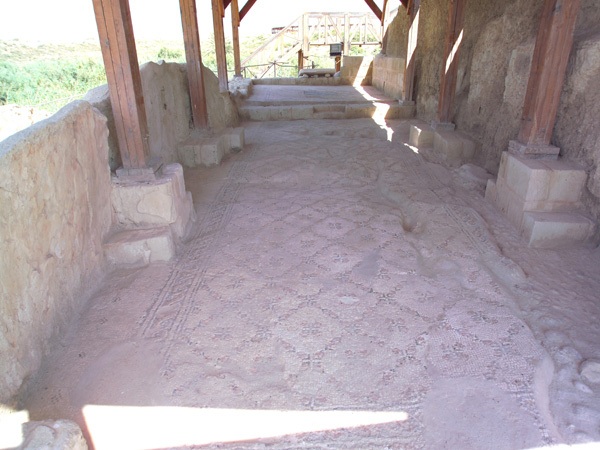
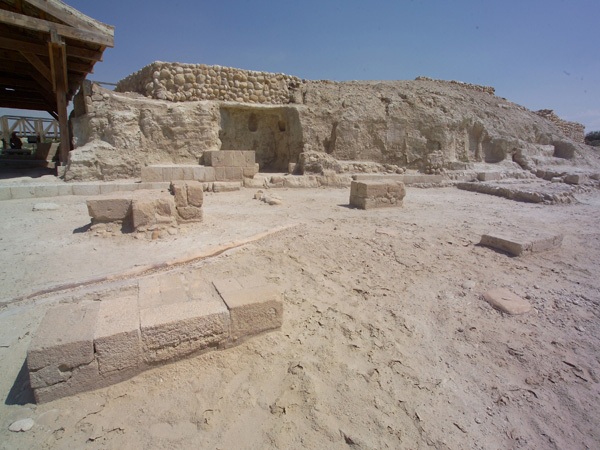

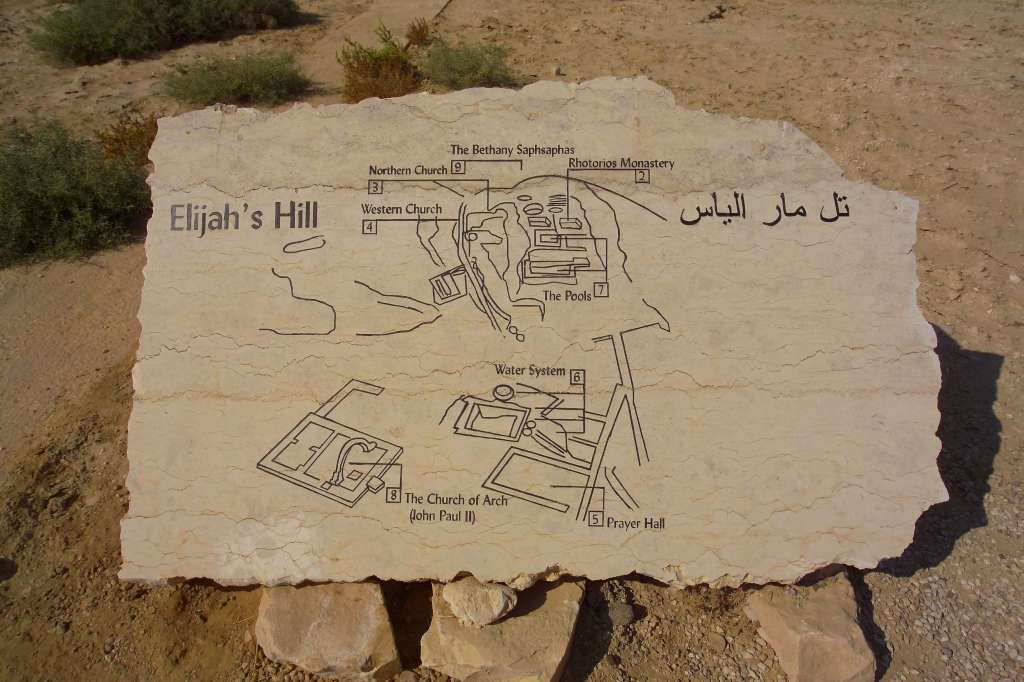
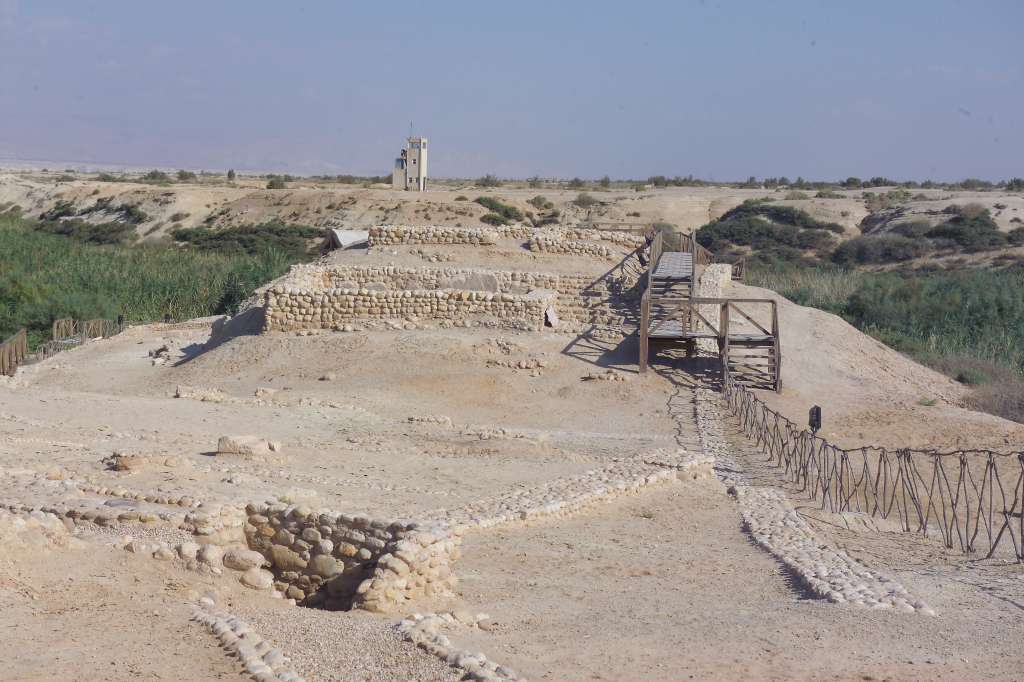

A large pool was uncovered during the excavation in the lower area of Bethany beyond the Jordan flanking the Jordan River, called the ‘Zor’ area. This large stone-built and plastered pool measures over 25m x 15m, and might have been used for group baptisms in the Byzantine period. A well-built canal directed water into the pool from a nearby spring to the north, and carried water out of the pool’s southern wall. Material recovered from the pool dates the structure to the Byzantine period, during the 5th-6th centuries AD.
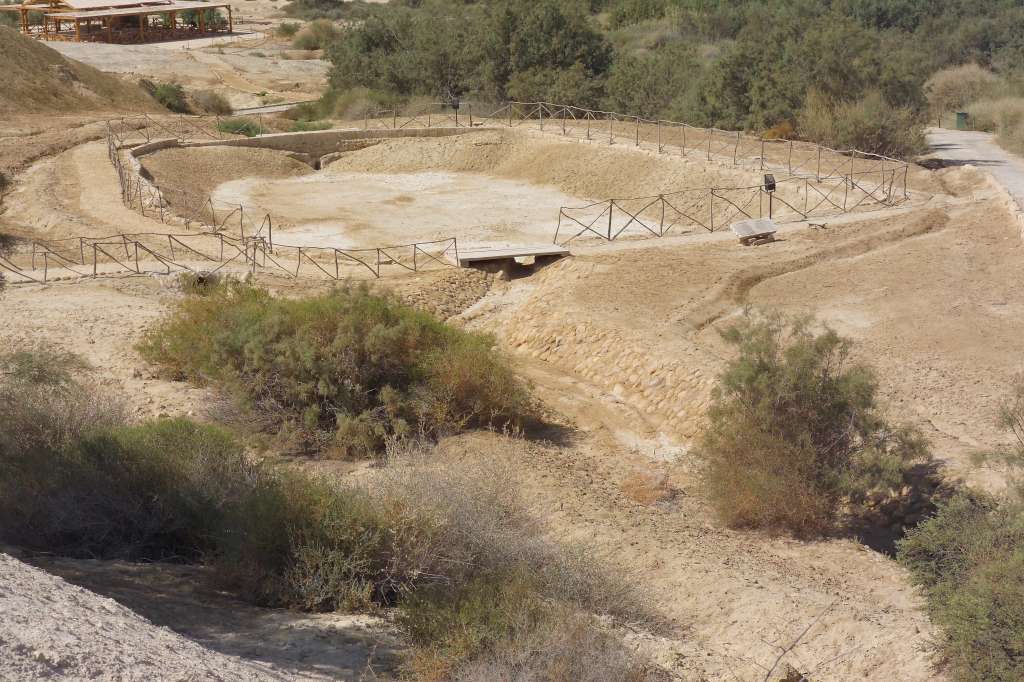
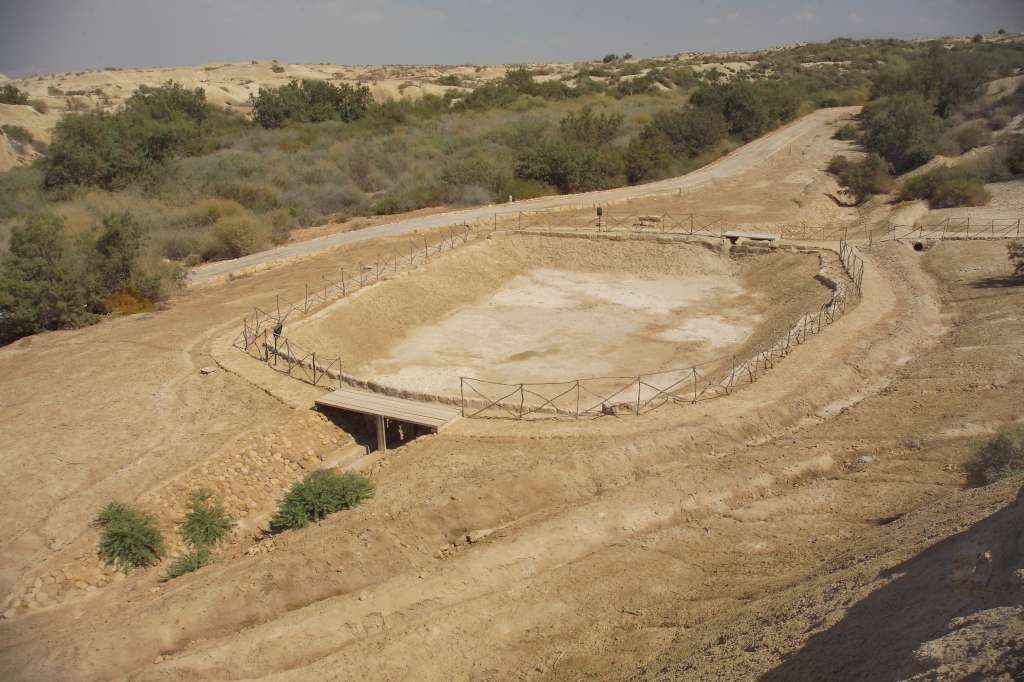
Two caves (cells) were discovered dug into the upper layers of the cliffs on the eastern side of the baptismal site Jordan river.
These types of caves are found in monasteries in ‘the wilderness’, near the banks of the baptismal site Jordan river. Hermits used these caves as places of pious devotion, as dwellings, and for prayer. Prayer niches were carved into the eastern walls of the two caves, perhaps as an indication of the caves being converted into a church (place of worship).
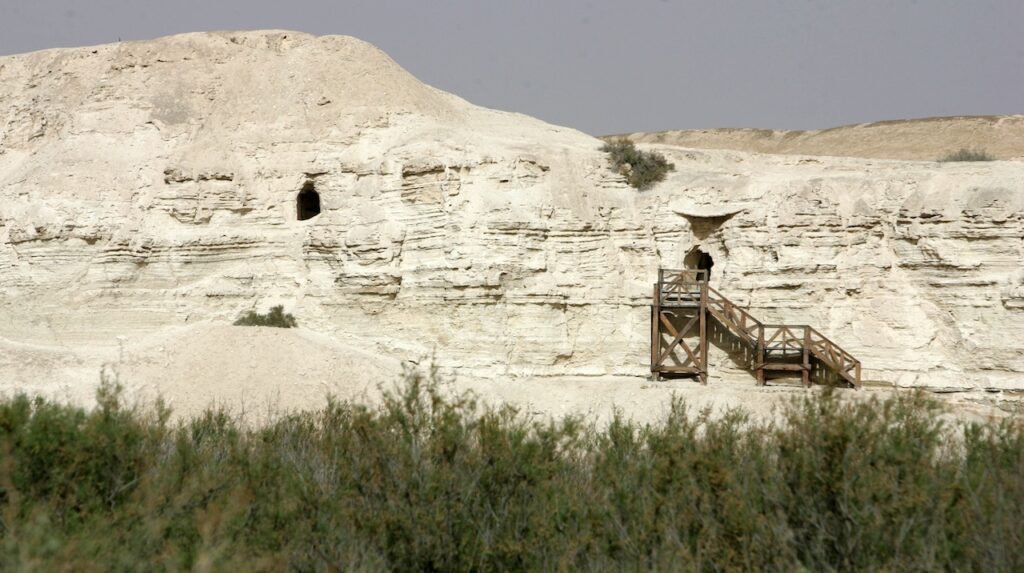
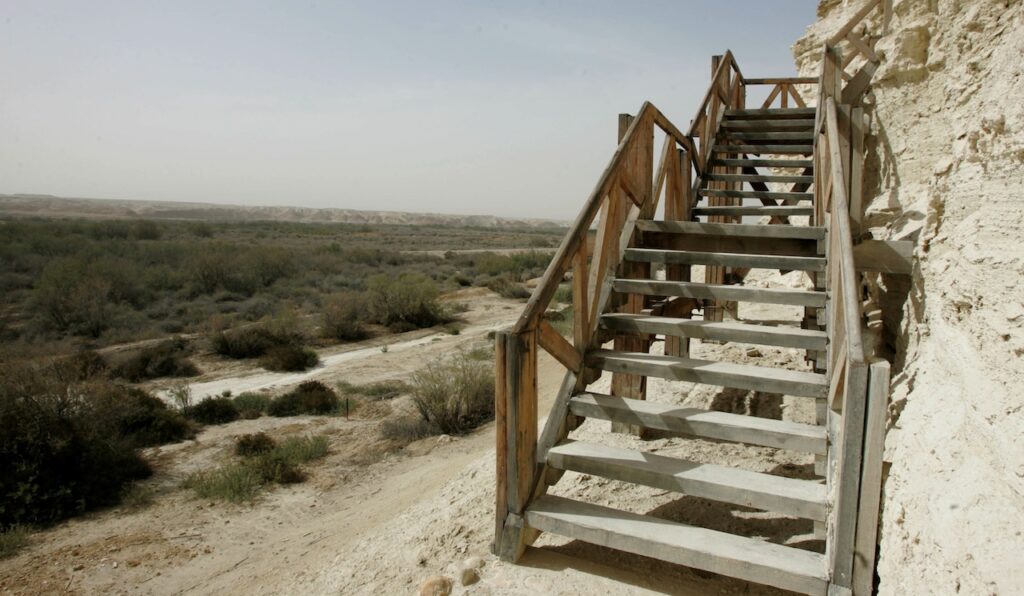
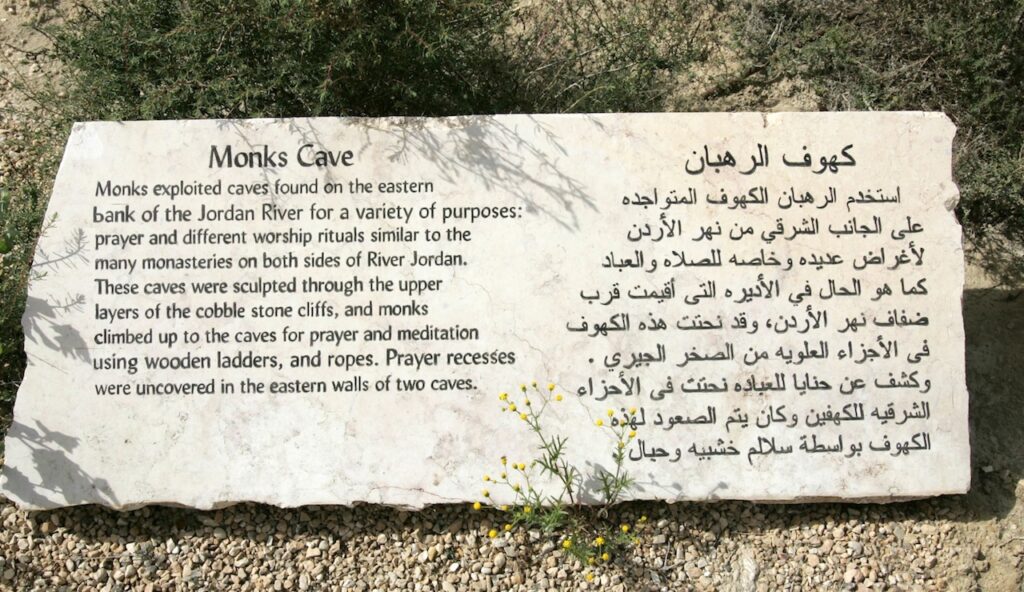

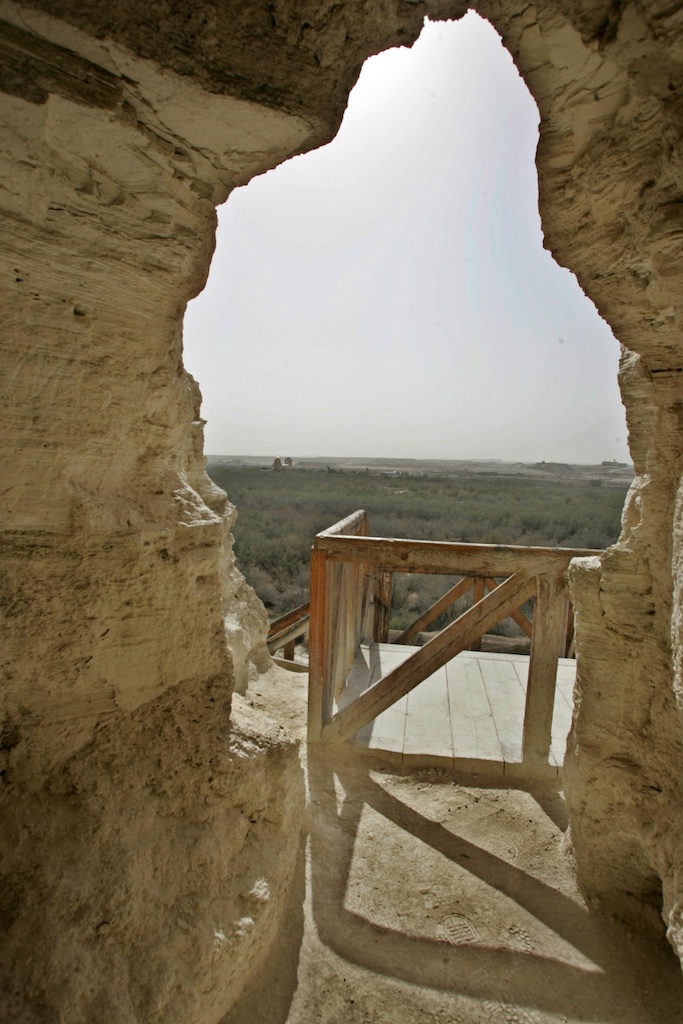
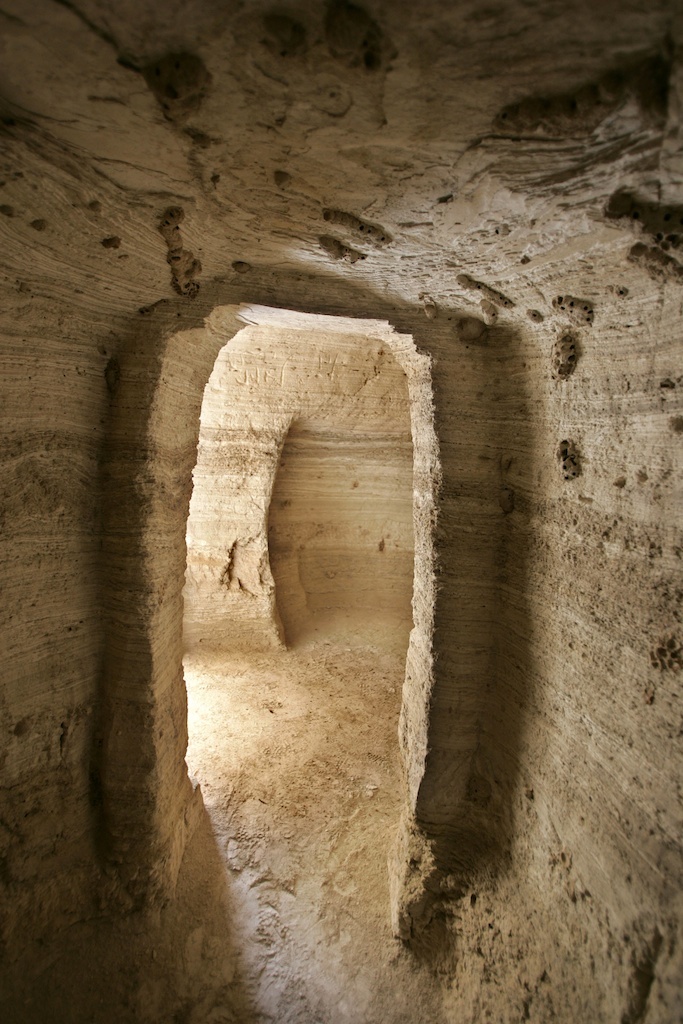
Travellers and historians described this spring as flowing from a point near Tell Mar Elias and reaching the area near John the Baptist’s Church. Pilgrims said the water of this spring was used for drinking and for baptism. Several structures and pools were built along the route of the freshwater. Ancient writers referred to the site as Aenon.
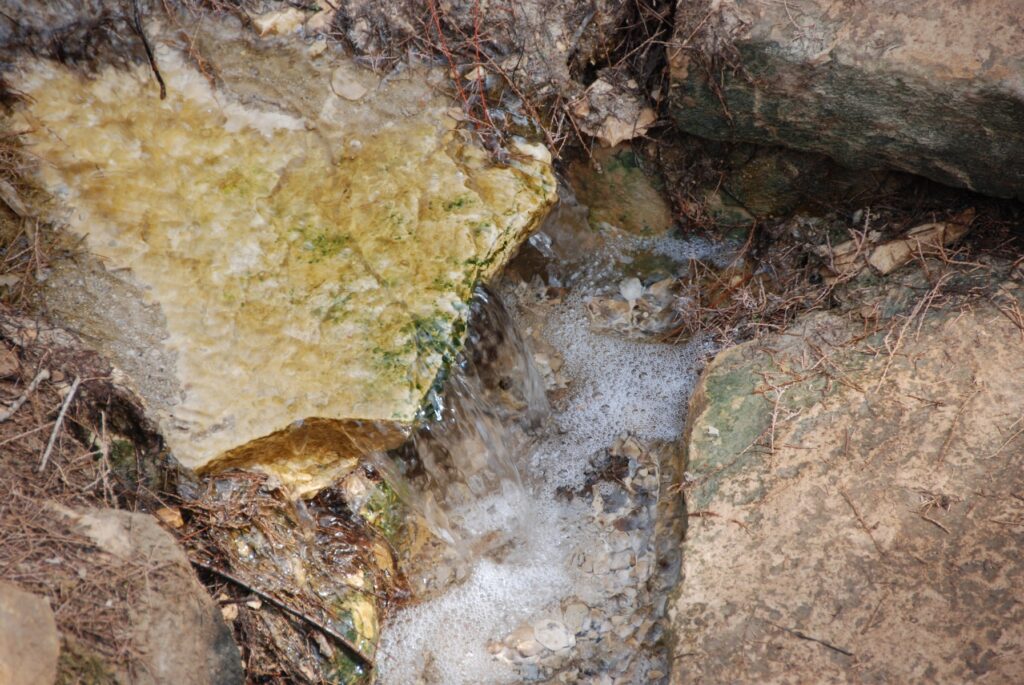
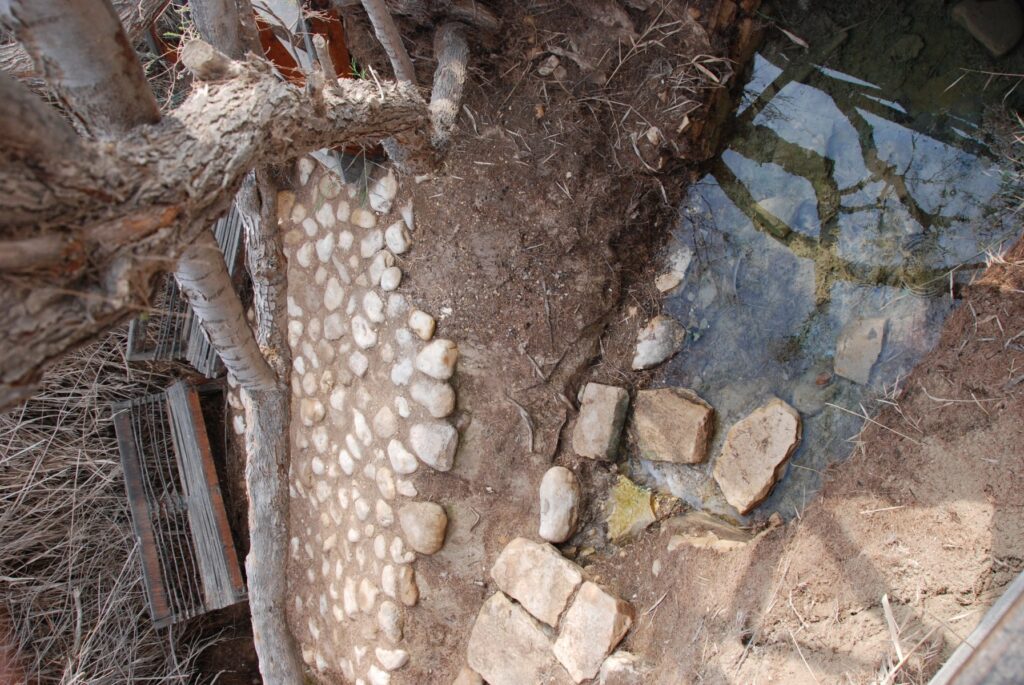
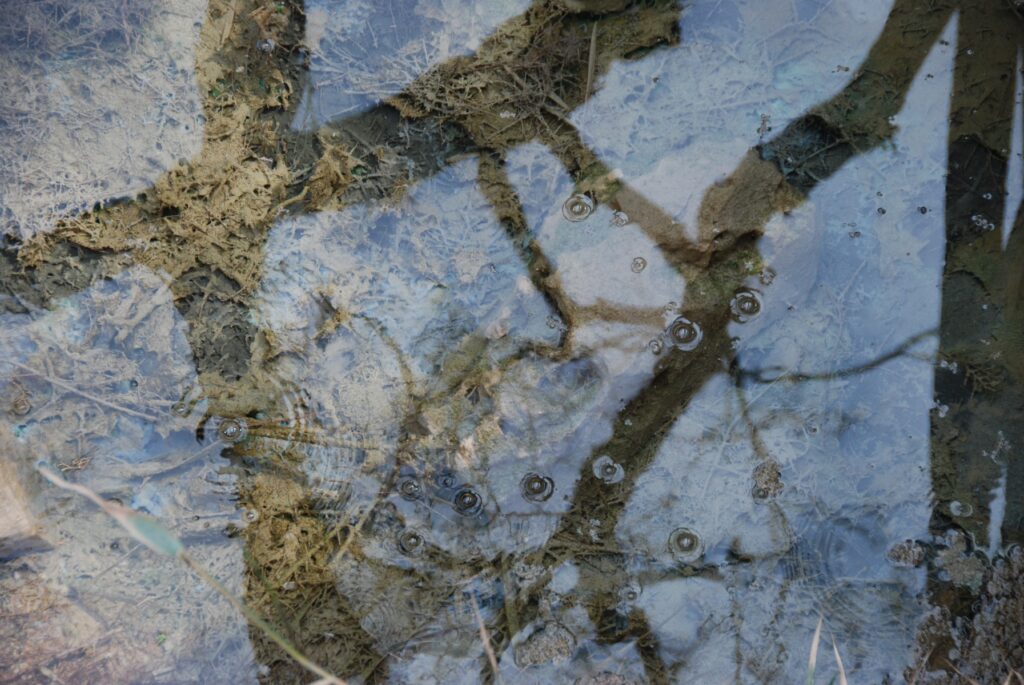
Not far from Tell al-Kharrar, at a distance of 300m to the west on the southern edge of Wadi al-Kharrar, some architectural remains were discovered. They consist of a small structure with foundations built from local fieldstones and upper courses built from mud bricks. Wooden beams were fixed to roof the structure that evidently was used by monks as living and prayer quarters, and for offering necessary services to the pilgrims visiting the site. Such facilities formed a Laura, or a monastery comprised of many individual hermit cells in a defined area.
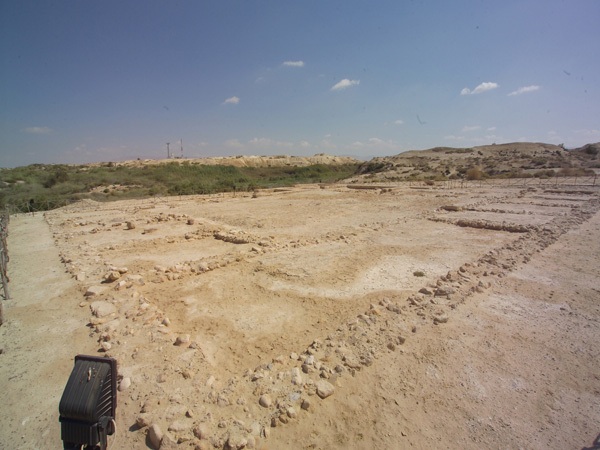
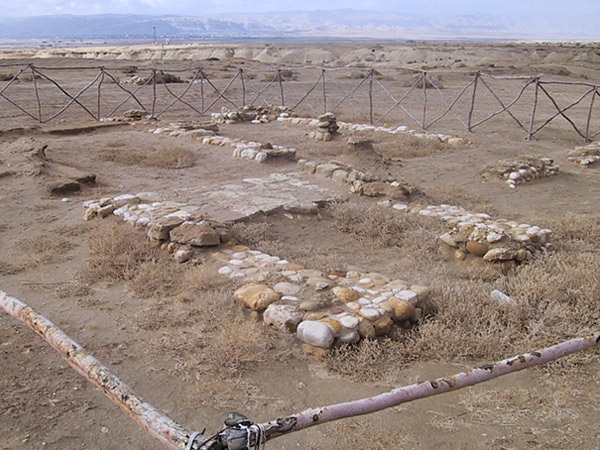
One of The most famous legends regarding the area of ‘Wadi al-Kharrar’ is about the life of Saint Mary the Egyptian, who chose to live a disreputable life in Alexandria in her youth. She abandoned her life of sin during a visit to Jerusalem and went on to become a model of repentance.
After consulting the Virgin Mary in Jerusalem, she had heard a voice telling her: ‘Cross the Jordan and you will find rest’. She crossed to the east bank of the Jordan River, and spent the last 47 years of her life living alone, praying and fasting in the Jordanian desert where she could be close to God. Before dying, she was found by the monk Zosima from a nearby monastery, who prayed with her, listened to her story, and gave her Holy Communion shortly before she died. Zosima buried her, reportedly with the help of a lion, that helped him dig her grave with its paws.
The site associated with Saint Mary the Egyptian is in the ‘Zor’ area close to the place where Jesus was baptized.
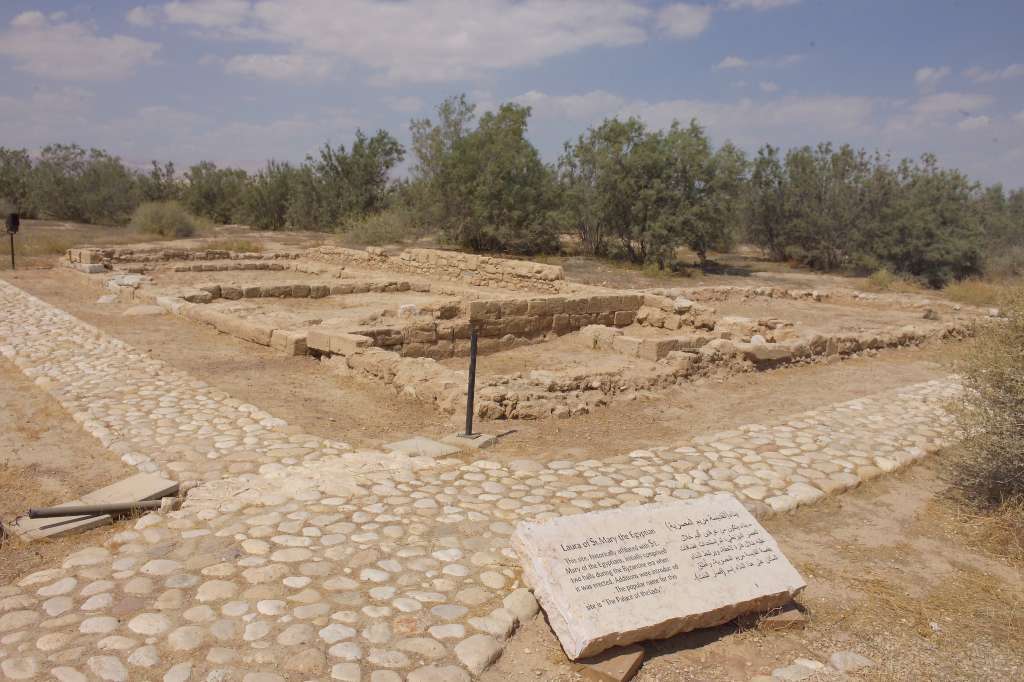
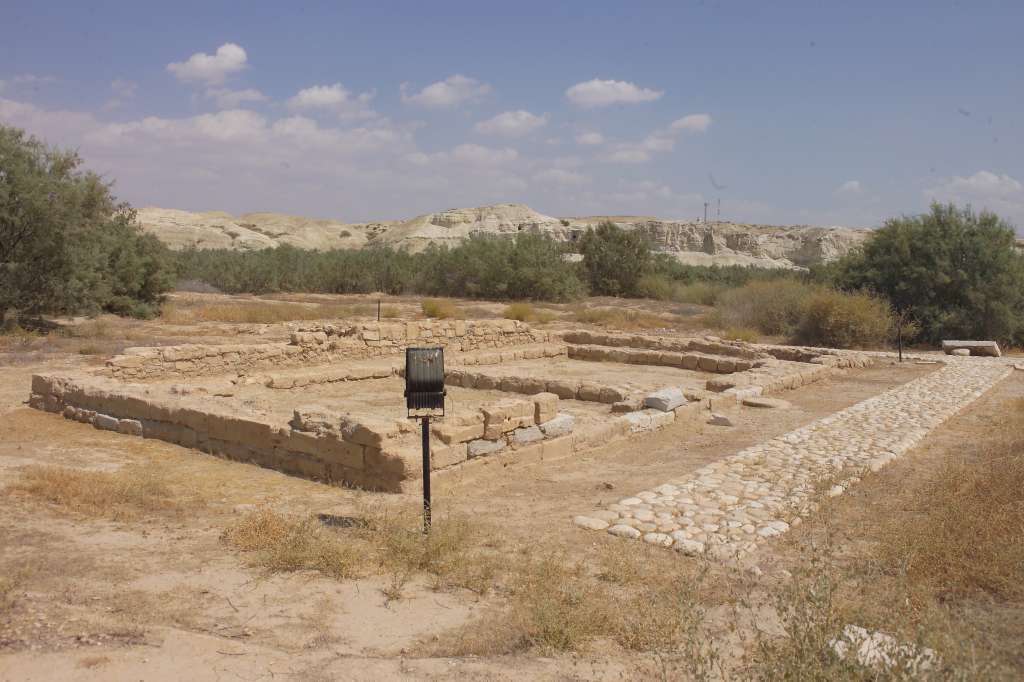
Throughout history, Christian pilgrims visited the region east of the Jordan River on their way from Jerusalem to Mount Nebo. They usually crossed the Jordan River near Jericho, visiting and sometimes describing the Christian facilities or their remains along ‘Wadi al Kharrar’, back then Saphsaphas, “Wadi Gharabah” (about a kilometer south of ‘Wadi al Kharrar’, and Livias (Tell al-Rameh).
A pilgrims’ station was built during the Byzantine period (5th–6th centuries AD) between the Jordan River and Tell al-Kharar. This station for pilgrims visiting the area had a number of rooms around an open courtyard, which were served by an adjacent water pool.
Two Roman roads were built during the era of Emperor Hadrian. Around 129 AD, a road was built to connect ‘Hesban’Esbus with ‘Tell al-Rameh’, Livias Jericho, and Jerusalem.

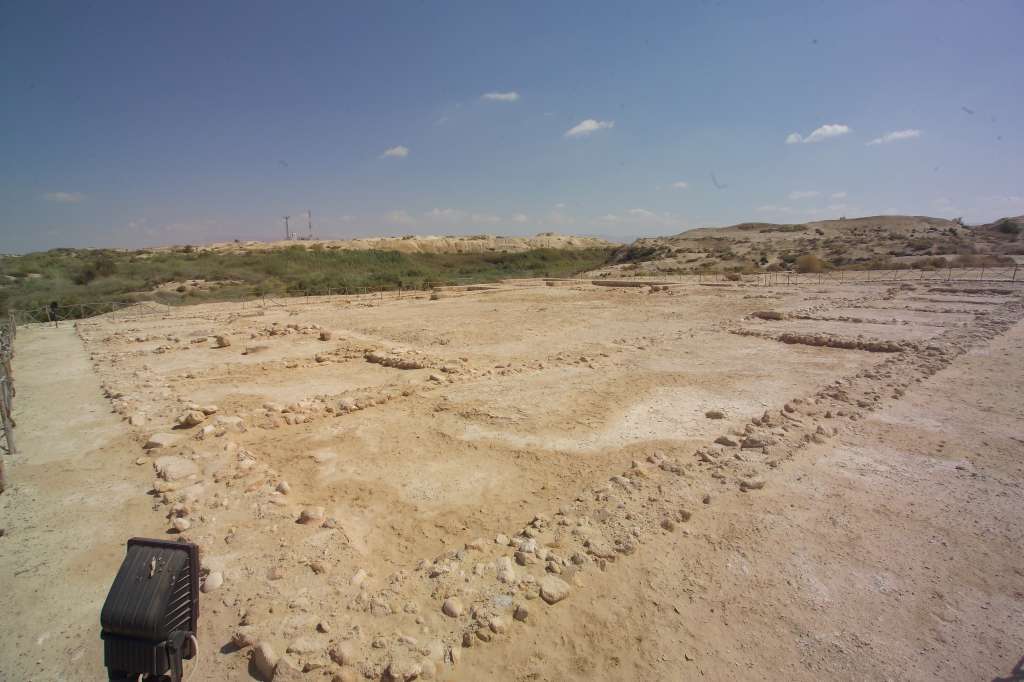
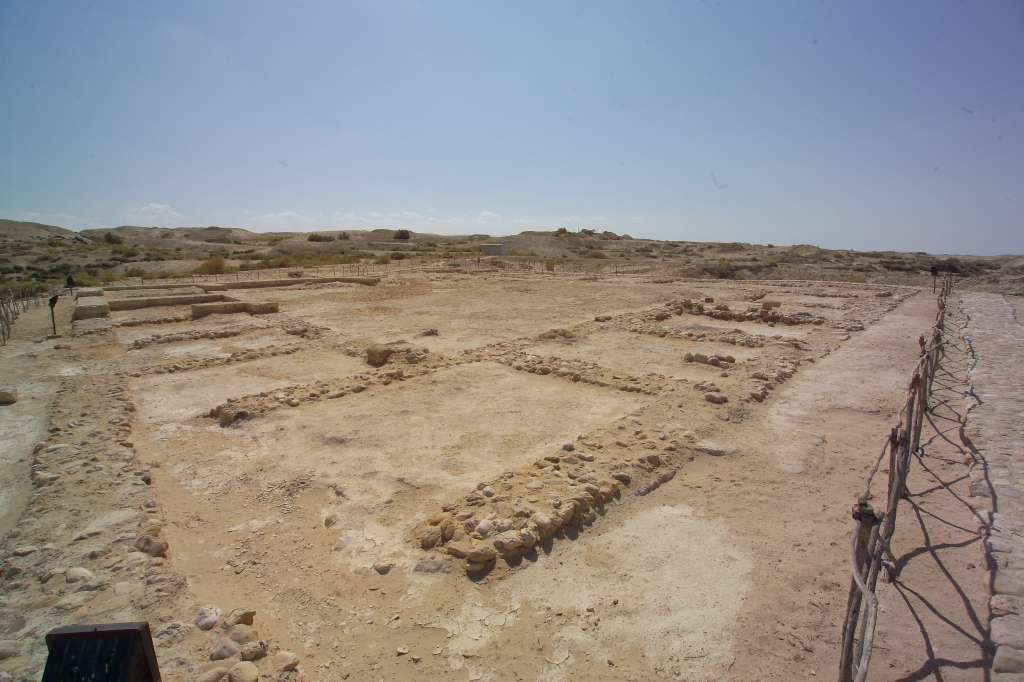
As soon as Jesus was baptized, he went up out of the water. At that moment heaven was opened, and he saw the Spirit of God descending like a dove and lighting on him…” (Matthew 3:16-17)
The authenticity of this site is as pure as the testimonies from the gospels, the pilgrims and travelers that have visited this cherished site. The archaeological sites discovered and the associated studies carried out recently show the remains of five churches uniquely designed and built since the 5th century as memorials of Jesus baptism. In addition, the mosaic map of the Holy Land where the site is depicted. Finally, all this is crowned by the official letters sent to the Royal Commission by many heads of churches around the world.
1 – John the Baptist Church
Just east of the Jordan River, about 9 kilometers north of the dead sea modern explorers discovered the ruins and foundations of a large number of sandstone piers related to a Byzantine church built at the time of Emperor Anastasius (491-518 AD). This church was considered the most notable memorial church of St. John the Baptist on the east bank of the Jordan River. Theodosius (A.D 530) wrote: “5 miles north of the Dead sea in the place where the Lord was baptized there is a single pillar and on the pillar an iron cross has been fastened, there too is the church of S. John the Baptist, which the Emperor Anastasius built: this church is very lofty, being built above large chambers, on account of the Jordan River when it overflows.”
Although the pillar marking the place where the place where the Lord was baptized is not yet discovered, the archaeological and architectural remains match with what was described by Theodosius.
